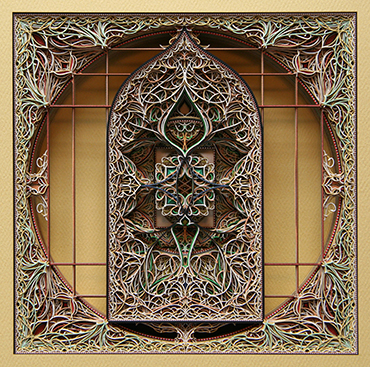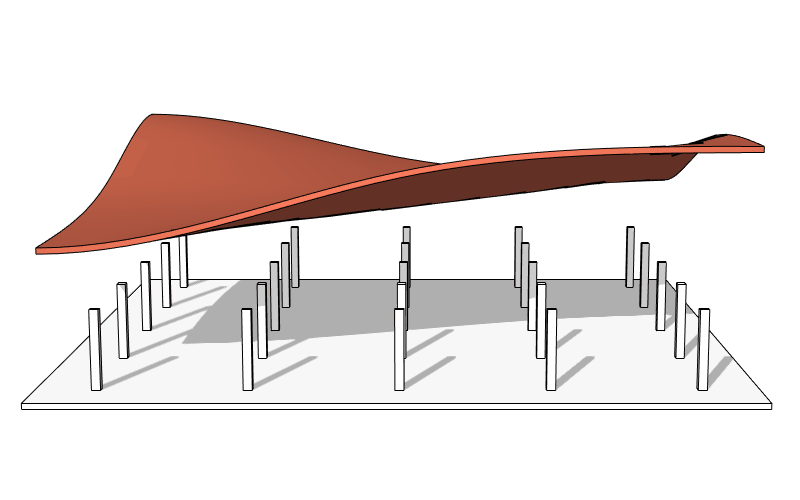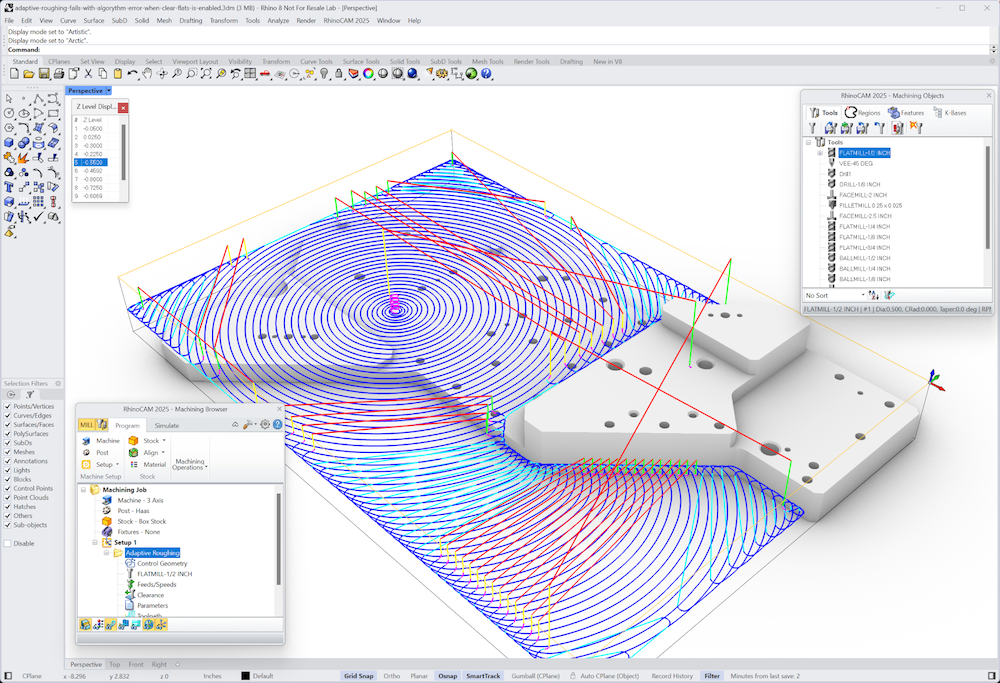Your Cart is Empty
Customer Testimonials
-
"Great customer service. The folks at Novedge were super helpful in navigating a somewhat complicated order including software upgrades and serial numbers in various stages of inactivity. They were friendly and helpful throughout the process.."
Ruben Ruckmark
"Quick & very helpful. We have been using Novedge for years and are very happy with their quick service when we need to make a purchase and excellent support resolving any issues."
Will Woodson
"Scott is the best. He reminds me about subscriptions dates, guides me in the correct direction for updates. He always responds promptly to me. He is literally the reason I continue to work with Novedge and will do so in the future."
Edward Mchugh
"Calvin Lok is “the man”. After my purchase of Sketchup 2021, he called me and provided step-by-step instructions to ease me through difficulties I was having with the setup of my new software."
Mike Borzage
The Edge: Eric Standley’s Unique Laser Cut Artwork
May 03, 2013 4 min read
Today we hear from Eric Stadley, the artist behind these unique laser cut stain glass windows.
Virginia Tech: Eric Standley from virginiatech on Vimeo.
Novedge: Tell us about yourself and what you do.

Eric Standley: I am an artist with a formal background in painting. Somewhere along the way my allegiance to content overthrew my obsession with paint. I did manage to retain my meticulous nature. I am also an Associate Professor of Studio Art at Virginia Tech.


Novedge: Your work is unique. How did you come up with the idea of Laser Cut Windows?
Eric Standley: I was working on a series called AM Wisdom that included laser cutting circle-based patterns into Cheerios boxes. When I was leaving the laser lab one day I stacked a few cut pieces together and was blown away by the layered complexity of the different works. I took out my sketchbook and wrote down a dozen questions that took about 2 years to work through. The dominate question being "Could I be conscious of creating multiple layers that related to one another at the same time?" It's funny, I never considered the work to be windows exactly. I am influenced by Gothic and Islamic geometry found in architectural ornamentation- including windows, but always saw the work as a form of drawing. It's the relationships of the negative spaces between layers that become physical space- an odd transformation from the sum of 2 dimensional drawing to 3 dimensional spaces.

Novedge: Can you talk about your process in creating these incredibly elaborate pieces?
Eric Standley: I sketch a composition first- working out an overall goal. Then I draw each layer in vector-based software. Each layer is cut individually with a CNC Laser. The work is then cleaned of chads, assembled and bound like a flip book. The final stage of my process includes building a mount and frame that holds the work, allowing for a degree of movement that is inherent with paper. The vector drawing process is the most time consuming, taking me months to work through. I draw on a matrix: compositions are constructed across the page and laterally on layers above and below. Generally I work on 3 layers at one time. My max capacity is a lateral consciousness of 7 layers at one time- of which I can do for about an hour. It's taken some practice to do. The closest analogy I can think of is playing chess: to consider 4 or 5 moves ahead and the possible tangents… that's more or less the same facility of my mind- a similar game…


Novedge: What software do you use?
Eric Standley: I use CorelDRAW for my vector work. The program has a fairly sophisticated CAD-like orientation while still being visually responsive. It's important for me to see what I'm doing as I make decisions. I have been meeting the limits of the software recently even though the vectors take up a small amount of memory. I am currently working on an Arch that at layer 20 is over 23,000 nodes/8000 objects. I'm having to produce two separate vector drawings that will be cut on top of each other to make one very complex layer. I cut with a ULS PLS6 laser outfitted with a High Power Density Optic package. The optics changed my work- allowing me to cut a thread of paper .008" wide- about half the thickness of the paper itself.

Novedge: How does teaching inform your art practice and vice versa?
Eric Standley: I believe creativity is best fostered in an environment that encourages process and discovery. This requires risk taking, allows for individuality and permits epiphanies. Such a learning environment is incredible to be a part of. I provide guidance by way of some wisdom, stories and experiences, and in return I come to know each student, work with them and assist in their goals. I am honored to be a part of and witness their artistic progress.


Novedge: Can you tell us a bit about your upcoming projects?
Eric Standley: I've been working with light recently- illuminating from within the work (as seen in Argos). I've also been working outside traditional geometry and leaning toward bilateral symmetry and asymmetry, as found in water- flow dynamics for instance. These are coming through in Arch 4 which is currently in progress. I've also been working with some hand-made papers, rice paper and transparencies. There are certainly more failures than successes with newer questions and goals, but I feel an urgency to produce the work. It wakes me up in the morning and it is the last thing I'm thinking of before I fall asleep. There is still quite a bit to do within this body of work.
Curious to see more of Eric's work? Check it out on his website.
And don't forget to connect with us on Twitter and Facebook!
Also in NOVEDGE Blog

Enhance Your Designs with VisualARQ 3: Effortless Geometry Extensions for Walls and Columns
April 30, 2025 8 min read
Read More
MecSoft Unveils RhinoCAM 2025 and VisualCAD/CAM 2025 with Enhanced Features
March 08, 2025 5 min read
Read MoreSubscribe
Sign up to get the latest on sales, new releases and more …




